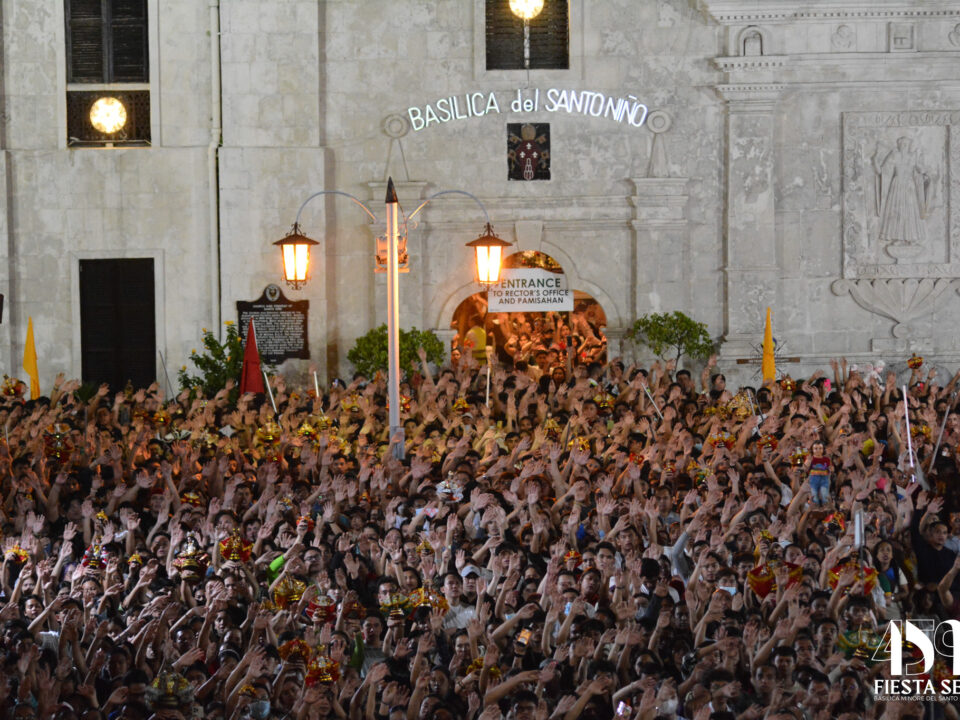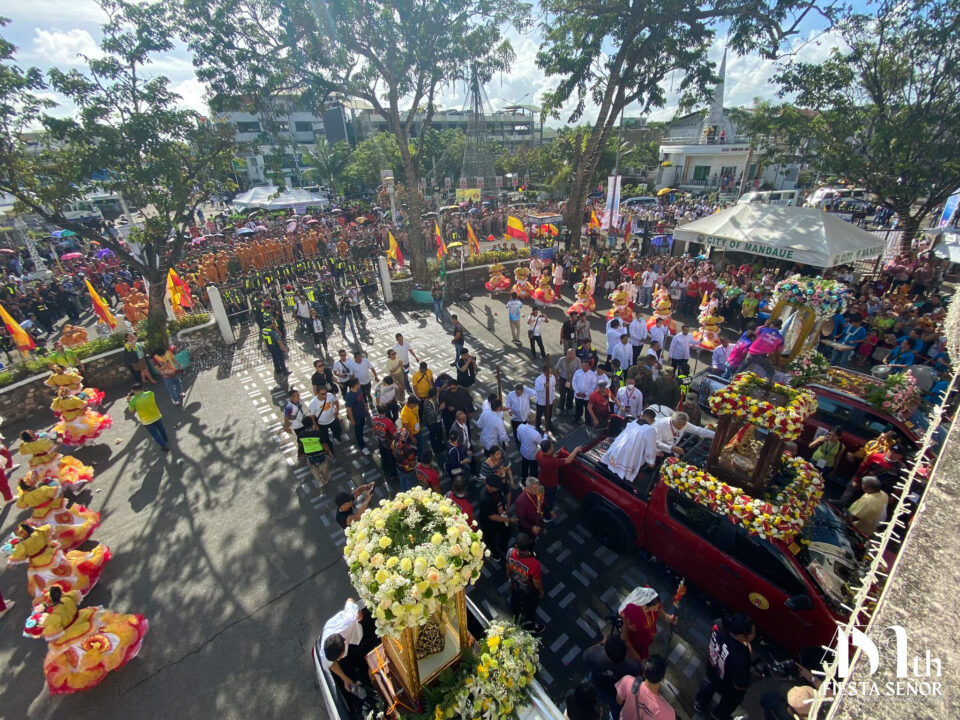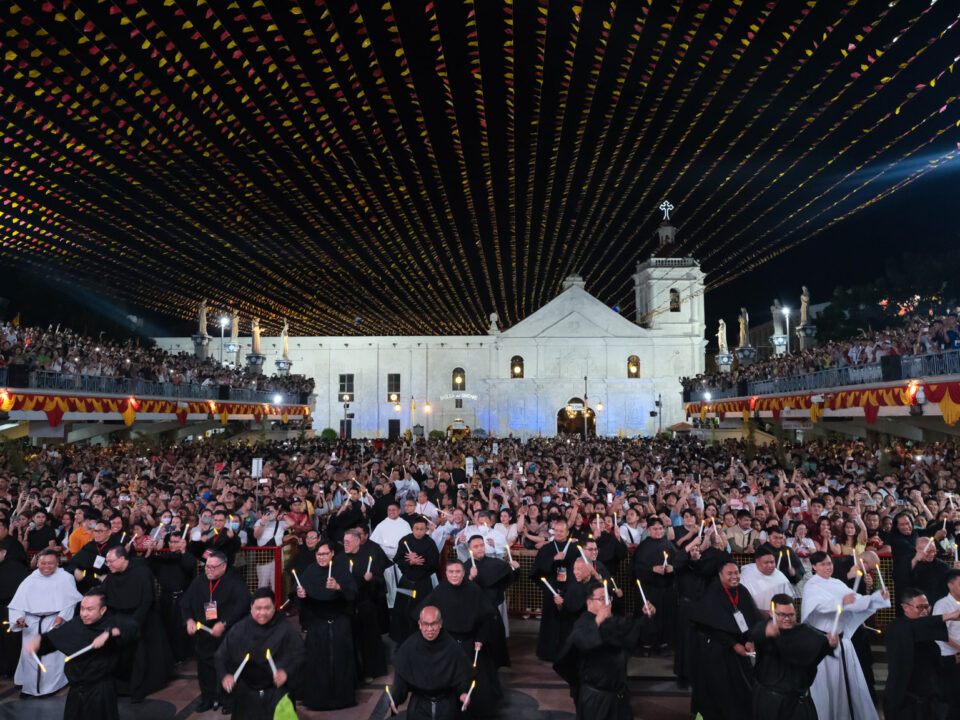15 Fiesta Señor Religious Traditions
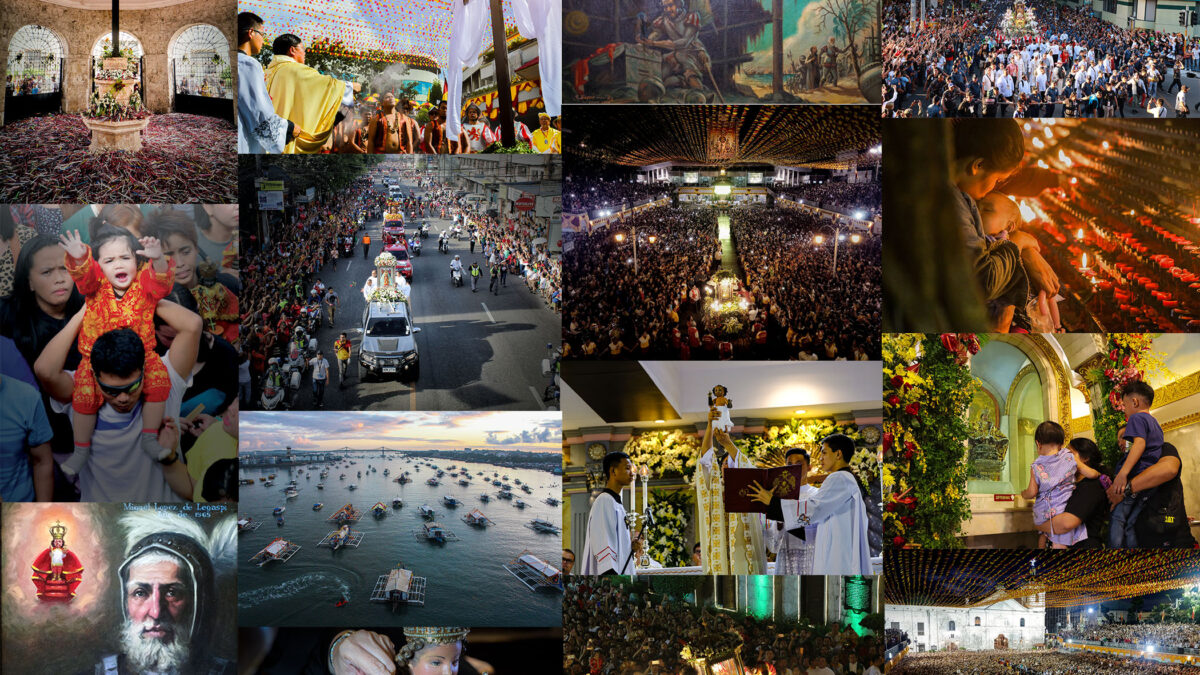
The devotion to Santo Niño is no exception to various religious piety expressed by the devotees who visit the Basilica annually to celebrate the feast of the Holy Child Jesus.
“Popular piety” or “religious piety” refers to the common devotion of the Christian people to God, as expressed in non-sacramental practices that develop among Catholics over time and are eventually sanctioned by Church authorities. The Catechism mentions a series of examples, including “veneration of relics, visits to sanctuaries, pilgrimages, processions, the stations of the cross.” These actions demonstrate a zeal for religious observance beyond the routine repetition of the Catholic Church’s required rituals. (Source)
Here are the fifteen notable religious traditions seen every Fiesta Señor.
-
Kaplag (Finding of the Image of the Santo Niño de Cebu)
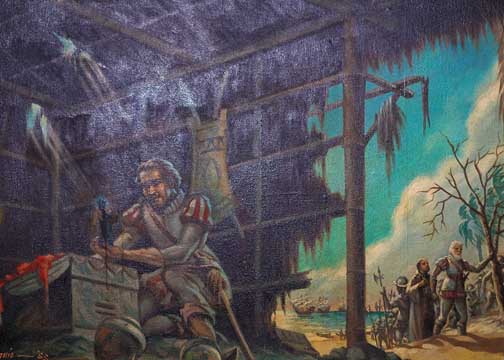
Given as a gift from Ferdinand Magellan to Reyna Juana on her baptism in 1521, the Santo Niño image was kept with her; forty-four years later, the image was providentially found on April 28, 1565. Since its finding, the image was entrusted to the care of the Augustinian friars (Order of Saint Augustine) up to present and likewise celebrate a feast day. The Augustinians built a chapel at the place where the image was found and later on a church named San Agustin Church now known as the Basilica Minore del Santo Niño de Cebu. For a time the Fiesta Señor is celebrated every April 28 but later was transferred to 3rd Sunday of January by Pope Innocent XIII. - Igsuon (Hermano and Hermana Mayores)
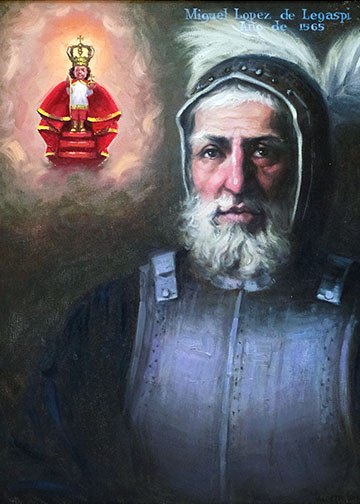
With the return of the Spaniards in Cebu in 1565 and the eventual finding of the image of the Santo Niño in the same year, a confraternity was established in honor of the Santo Niño with Adelantado Miguel Lopez de Legazpi as the first hermano mayor to help in propagating the devotion. It was formerly called the Cofradia del Santisimo de Nombre de Jesus and was canonically re-established in 1933 as Cofradia del Santo Niño de Cebu. Since then, the hermano and hermana mayores are one of the key figures of the Fiesta Señor celebration. -
Misa (Novena Masses)
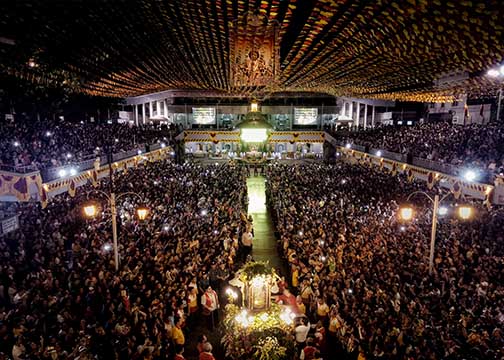
The Eucharist is “the source and summit of the Christian life.” (CCC 1324) For the Fiesta Señor celebration, the nine-day masses are held at the Santo Niño Pilgrim Center to accommodate the growing number of devotees coming to the Basilica every fiesta. The Santo Niño Pilgrim Center was conceptualized in 1989 and was used for the first time in 1992. Moreover, a special day is dedicated to Visperas, a day before the fiesta, to hold the fluvial parade, reenactment of the planting of the cross, first baptism, wedding and giving of the Santo Niño and the Solemn Foot Procession. -
Batobalani (Gozos to Santo Niño)
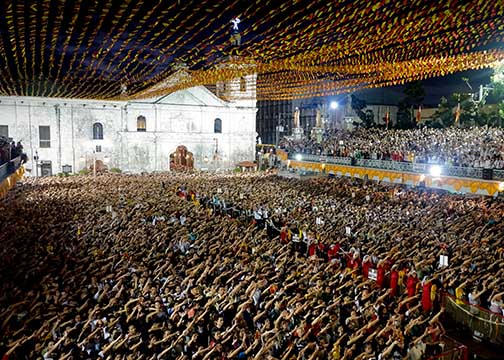
The Gozos to Señor Santo Niño de Cebu was officially incorporated into the novena masses in 1989. During the singing of the Gozos, devotees wave their hands as they offer their prayers. It is also an emotion-filled moment as the devotees are drawn into tears in tune of the Batobalani sa Gugma, the Magnet of Love, the Santo Niño. -
Sinug (Traditional Religious Sinulog)
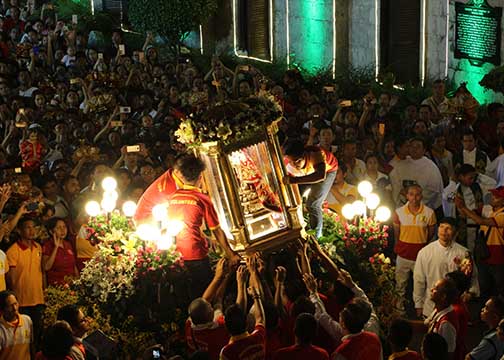
Pit Senyor! — an acclamation of the devotees’ while dancing and saying out loud their prayer petitions. This is heard during the entirety of the Traditional Religious Sinulog that happens after the last novena mass of the day. On ordinary days in the Basilica, candle vendors in red and yellow are the ones doing the two-steps-forward-one-step-backward or also known as Sinug. -
Bata (Children’s Mass)
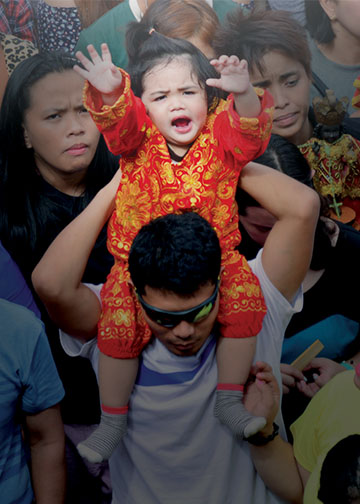
On the fourth day of the Fiesta Señor’s novena masses, a special mass dedicated for the children is celebrated. On this day, children are donned in Santo Niño dresses by their parents and guardians. This sight also reminds us to not forget our child-like quality of being dependent on our Father as we go back in His arms to implore His aid in times of need. -
Halad (Candle Offerings at the Magellan’s Cross Kiosk)
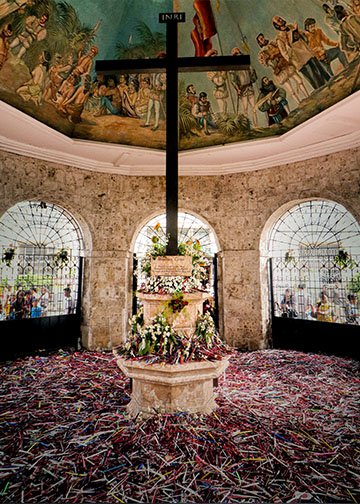
As an act of offering prayer petitions by the devotees to the Holy Child, thousands of candles pile up inside the Magellan’s Cross’ Kiosk during the duration of the Fiesta Señor celebration — a sight to behold as it only happens once a year. - Ilis (Re-vesting)
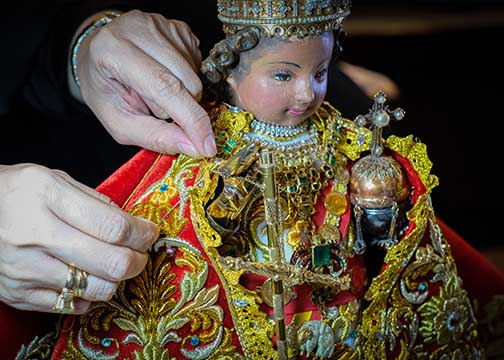
Revesting or Ilis is a solemn tradition wherein the vestment of the original image of the Santo Niño de Cebu (Holy Child) is replaced to a new set. A group of camareras are the ones assigned to put on the new vestment of the Holy Child. The last time that the original image was used for an outside activity was in 1993. -
Duaw (Traslacions)
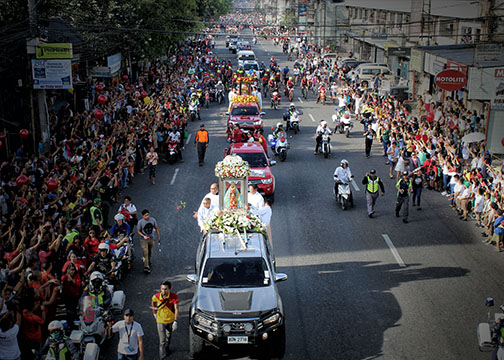
In 1989, there was the addition of a traslacion – a mobile procession – from Basilica to Mandaue City as the image of Santo Niño de Cebu stays overnight at the St. Joseph Parish before the start of the fluvial parade on Visperas day. Later on, the image of the Holy Child is accompanied by His mother, the Our Lady of Guadalupe. In 2018, the traslacion was extended to Nuestra Señora Virgen de la Regla National Shrine and Parish in Lapu-Lapu City. - Galleon (Fluvial Parade)
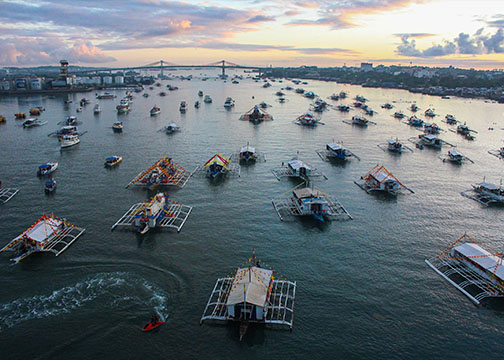
The inclusion of holding a fluvial parade as part of the Fiesta Señor began in 1985 through the rectorship of a Boholano Augustinian friar, Rev. Fr. Ambrosio Galindez, OSA. The first port of departure was in LUYM Port of LUDO before it was transferred to Mandaue and then later to Lapu-Lapu. Earlier records of fluvial activities were in January 1740 and April 1965. First, after the existing church structure was finished, which was built by Fr. Juan de Albarran, OSA, and the other one was during the 4th centenary of the Christianization of the Philippines. -
Pagtuo (Reenactment of the Planting of the Cross, First baptism, mass, and wedding)
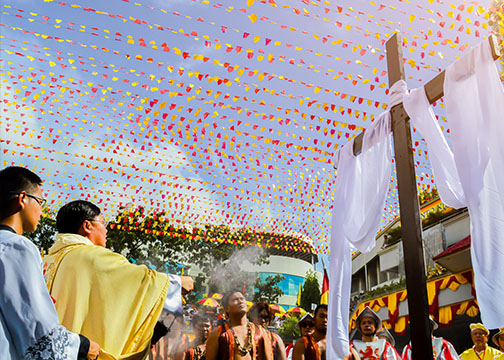
To commemorate the planting of the Cross, the first baptism, mass, and wedding in Cebu, a reenactment is held at the Santo Niño Pilgrim Center on Visperas day, hours before the start of the Solemn Foot Procession. The giving of the Santo Niño image, the planting of the cross, and the first baptism marked the introduction of Christianity in the Philippines way back in 1521. -
Kuyog (Solemn Foot Procession)
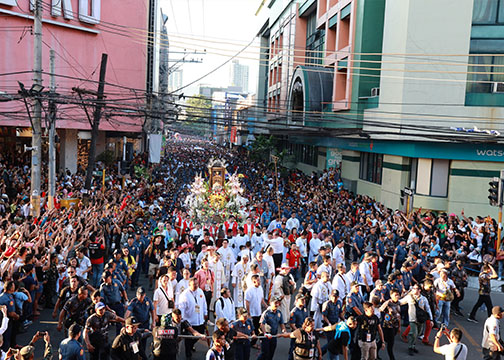
The Solemn Foot Procession that happens on visperas day is one of the highlights of the Fiesta Señor celebration wherein thousands of devotees join and flock the major streets of Cebu City. This religious activity gathers people worldwide to walk in sacrifice and to unite in prayer and thanksgiving to the beloved Holy Child Jesus, the Santo Niño. -
Dagkot (Lighting of Candles)
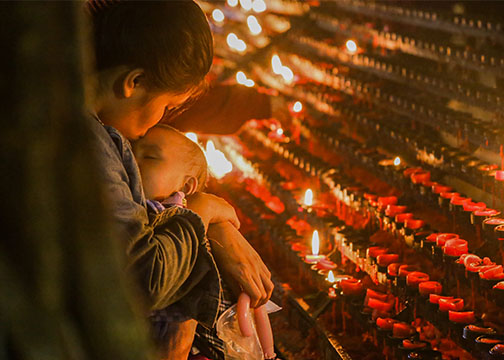
Lighting of candles or dagkot is among the expressions of faith seen in the Basilica Minore del Santo Niño de Cebu. It also signifies the devotees’ reverence to remain present in prayer as they offer their petitions. The present location of the Basilica’s candle area or dagkotanan is located at the right side facing the Pilgrim Center which was constructed in 2005. -
Halok (Veneration through Kissing)
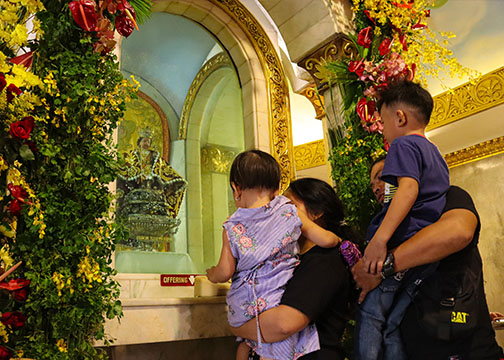
Veneration through kissing or Halok to the miraculous image of the Santo Niño de Cebu is a devotional expression of the devotees of the Holy Child. The growing number of devotees led to the construction of the marble chapel in 1975. Since then up to present, the marble chapel is where the original image of the Santo Niño de Cebu is enshrined and venerated. - Hubo (Changing of the fiesta vestment to ordinary one)
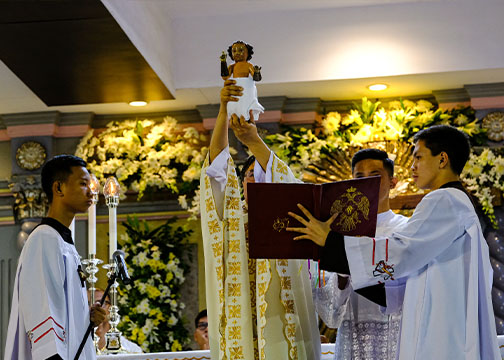
The Hubo—undressing of the Sto. Niño image—means to replace the image’s fiesta clothes into simpler garments. It started with the removal of the crown, then the orb, scepter, armlet, the bands, cape, tunic, inner garments, and boots. The rite of hubo marks the conclusion of the Fiesta Señor celebrations. This religious activity happens on a Friday after the feast day. Compiled and written by: Fr. Genesis Labana, OSA and Shiela Mae Gumapon



